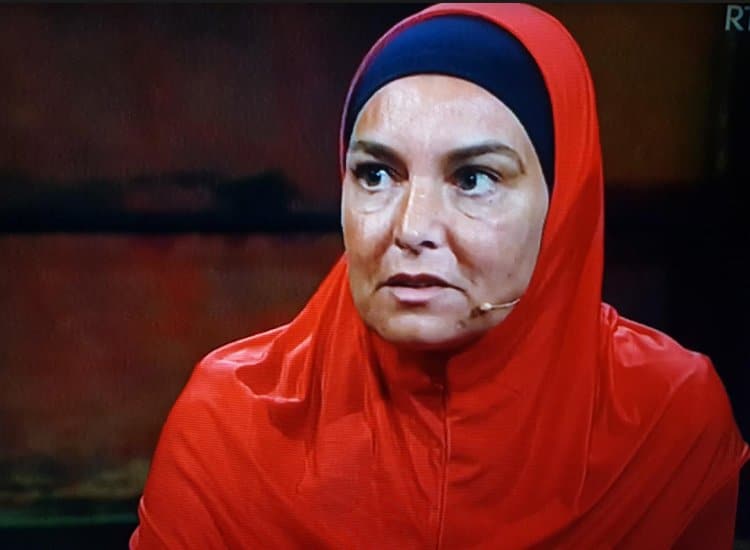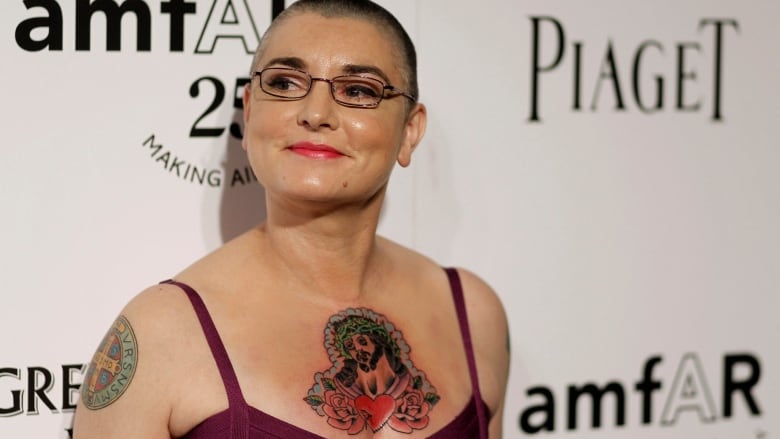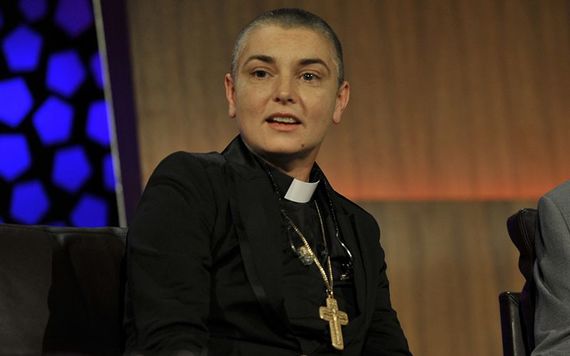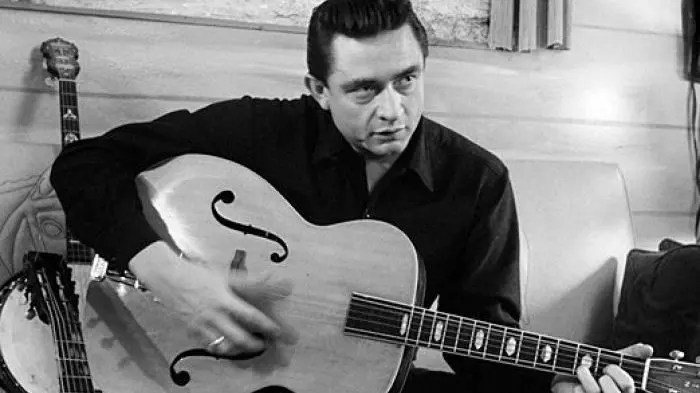Sinead O'Connor is one of the most colorful and controversial stars of pop music. She became the first and in many ways the most influential of the numerous female performers whose music dominated the airwaves during the last decade of the 20th century.
The daring and outspoken image - shaved head, evil appearance and shapeless things - is a loud challenge to popular culture's long-held notions of femininity and sexuality.
O'Connor irrevocably changed the image of women in the field of music; by defying age-old stereotypes by simply asserting herself not as a sex object but as a serious performer, she started a riot that became the starting point for performers ranging from Liz Phair and Courtney Love to Alanis Morissette.

Sinead's difficult childhood
O'Connor was born in Dublin, Ireland on December 8, 1966. Her childhood was quite traumatic: her parents divorced when she was eight years old. Sinead later claimed that her mother, who died in a 1985 car accident, often abused her.
After O'Connor was expelled from a Catholic school, she was arrested for shoplifting and transferred to a reformatory.
At the age of 15, while singing a cover of Barbara Streisand's "Evergreen" at a wedding, she was spotted by Paul Byrne, drummer for the Irish band In Tua Nua (best known as a U2 protégé). After co-writing In Tua Nua's first single "Take My Hand", O'Connor left boarding school to focus on her music career and began performing at local coffee shops.
Sinead later studied voice and piano at the Dublin College of Music.
Signing of the first contract
After signing with Ensign Records in 1985, O'Connor moved to London.
The following year, she made her debut on the soundtrack of the film The Captive, performing alongside guitarist U2.
After the singer had the initial recordings for her debut album rejected on the grounds that the production had a too classically Celtic sound, she took over as producer herself and began re-recording the album under the title "The Lion and the Cobra" with a reference to Psalm 91.
The result was one of the most famous debut albums of 1987 with a couple of alternative radio hits: "Mandinka" and "Troy".

The scandalous personality of Sinead O'Connor
However, since the beginning of her career, O'Connor has been a controversial figure in the media. In an interview after the release of the LP, she defended the actions of the IRA (Irish Republican Army), which caused widespread criticism from many quarters.
However, O'Connor remained a cult figure until the 1990 hit "I Do Not Want What I Haven't Got," a heartbreaking masterpiece sparked by the recent breakdown of her marriage to drummer John Reynolds.
Encouraged by the single and video "Nothing Compares 2 U", originally written by Prince, the album established O'Connor as a major star. But controversy arose again when the tabloids began to follow her affair with black singer Hugh Harris, continuing to attack Sinead O'Connor's outspoken politics.
On American shores, O'Connor also became the target of ridicule for refusing to perform in New Jersey if "The Star Spangled Banner" was played before her appearance. This drew public criticism from Frank Sinatra, who threatened to "kick her ass". After this scandal, the performer again made headlines for withdrawing from NBC's Saturday Night Live in response to show host Andrew Dice Clay's misogynistic persona, and even withdrew her name from the annual Grammy Awards despite four nominations.

The next conflicts with the publicity of Sinead O Connor
O'Connor also continued to add fuel as she waited for her third album, 1992's Am I Not Your Girl?. The record was a collection of pop tracks that did not live up to commercial or critical success.
However, any discussion of the album's creative merits quickly became uninteresting after her most controversial act. Sinead, appearing on Saturday Night Live, ended her speech by tearing up a photo of Pope John Paul II. As a result of this antics, a wave of condemnation washed over the singer, much more violent than those she had previously encountered.
Two weeks after her performance on Saturday Night Live, O'Connor appeared at a tribute concert for Bob Dylan at New York's Madison Square Garden and was quickly asked to leave the stage.
Feeling like an outcast by then, O'Connor had retired from the music business, as was subsequently reported. Although some sources claimed that she simply returned to Dublin with the intention of studying opera.
To be in the shadow
Over the next few years, the singer remained in the shadows, playing Ophelia in a theater production of Hamlet and then touring at Peter Gabriel's WOMAD festival. She also suffered from a nervous breakdown and even attempted suicide.
However, in 1994, O'Connor returned to pop music with the Universal Mother LP, which, despite good reviews, failed to return her to superstar status.
The following year, she announced that she would no longer speak to the press. The Gospel Oak EP followed in 1997, and in mid-2000 O'Connor released Faith and Courage, her first full-length work in six years.
Sean-Nós Nua followed two years later and was widely credited for bringing back the Irish folk tradition as its inspiration.
O'Connor used the album's press release to further announce her retirement from music. In September 2003, thanks to Vanguard, the two-disc album "She Who Dwells ..." appeared.
Here are collected rare and previously unreleased studio tracks, as well as live material collected in late 2002 in Dublin.
The album was promoted as O'Connor's swan song, though no official confirmation has been forthcoming.
Later in 2005, Sinead O'Connor released Throw Down Your Arms, a collection of classic reggae tracks from the likes of Burning Spear, Peter Tosh and Bob Marley, which managed to reach number four on Billboard's Top Regga Albums chart.

O'Connor also returned to the studio the following year to begin work on her first album of brand new material since Faith and Courage. The resulting work "Theology", inspired by the complexities of the post-11/2007 world, was released in XNUMX by Koch Records under his own signature "That's Why There's Chocolate & Vanilla".
O'Connor's ninth studio effort, How About I Be Me (And You Be You)?, explored the artist's familiar themes of sexuality, religion, hope and despair.
After a relatively quiet period, O'Connor found herself again at the center of conflict in 2013 following a personal dispute with singer Miley Cyrus.
O'Connor wrote an open letter to Cyrus, warning her of the exploitation and dangers of the music industry. Cyrus also responded with an open letter that appeared to mock the Irish singer's documented mental health issues.
O'Connor's tenth studio album, I'm Not Bossy, I'm the Boss, was released in August 2014.



